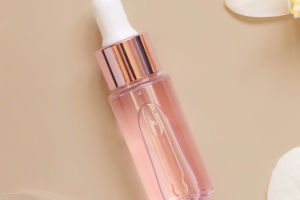As summer approaches, safeguarding your eyes from the intense ultraviolet (UV) rays of the sun becomes increasingly important.
Sunglasses not only shield your eyes but also help prevent sunburn and pigmentation issues around the delicate skin of the eyes.
However, selecting a pair of sunglasses that both protects your eyes from harmful UV rays and offers adequate comfort can be a daunting task for many. To assist in making an informed choice, Here, Lykkers, We will outline several key considerations based on the expert advice of ophthalmologists.
First and foremost, UV protection is the most critical factor when choosing sunglasses. Ultraviolet rays have a wavelength range between 280 and 400 nanometers, and their potential damage to the eyes primarily falls within this spectrum.
Therefore, an effective pair of sunglasses should block UV rays within this range. High-quality sunglasses typically offer a UV blocking rate between 96% and 98%, with some providing up to 100% UV protection.
When purchasing sunglasses, it is essential to check for markings such as "UV400" or "100% UV protection" on the lenses or packaging to ensure they offer adequate UV protection.
The color of the lenses also plays a significant role in selecting the right pair of sunglasses. Common lens colors like gray, brown, and green effectively absorb infrared and ultraviolet rays while maintaining the natural color of objects.
Gray lenses are particularly useful because they reduce light intensity without altering color perception, making them suitable for a variety of environments. Brown lenses, on the other hand, enhance contrast and are beneficial in bright, sunny conditions.
Green lenses help balance light and can make vision more comfortable. Choosing the right lens color can significantly improve visual comfort and protection.
The depth of the lens is another important factor to consider. Typically, medium-depth lenses are appropriate for most people as they effectively block UV rays without excessively reducing visible light.
However, if you are engaged in activities under intense sunlight, such as skiing or long-distance driving, opting for darker lenses might be advantageous.
Darker lenses provide enhanced shading and are better suited for these conditions. The lens depth should align with your specific needs, and different activities may require varying levels of lens darkness.
Furthermore, the quality of the lens is crucial for a satisfactory user experience. High-quality lenses should have smooth, flat surfaces free from scratches and bubbles.
To assess lens quality, hold the sunglasses about 50 centimeters from your eyes and look through them at straight lines in your surroundings, such as window or door frames.
Move the glasses up, down, and side to side to check for any distortion or deformation of the lines. If you notice that straight lines appear bent or wobbly, the lenses are likely deformed and unsuitable for wear. Scratches or bubbles on the lens surface can not only impair vision but also cause discomfort such as blurred vision or dizziness.
While sunglasses offer valuable protection, they are not suitable for everyone. Individuals with glaucoma or those who suspect they may have glaucoma should exercise caution. Wearing sunglasses can reduce the amount of visible light entering the eye, causing the pupils to dilate.
This dilation can potentially trigger an acute attack of angle-closure glaucoma, leading to symptoms such as red eyes, eye pain, and a sudden decrease in vision. For such individuals, it is crucial to select sunglasses with care and seek guidance from a healthcare professional.
For young children, ophthalmologists generally recommend limiting the use of sunglasses. Adequate natural light is essential for children's visual development, so it's advisable to avoid prolonged exposure to intense UV rays.
Instead of relying solely on sunglasses, protect your child's eyes with physical barriers such as wide-brimmed hats or umbrellas. If outdoor sun exposure is unavoidable, limit the duration of sunglasses use to no more than two hours to prevent any potential impact on their visual development.
Selecting the right pair of sunglasses is essential for protecting your eyes from UV damage and enhancing visual comfort. As summer approaches, ensure that you choose the appropriate eyewear to enjoy the sun safely and maintain healthy eyesight.


